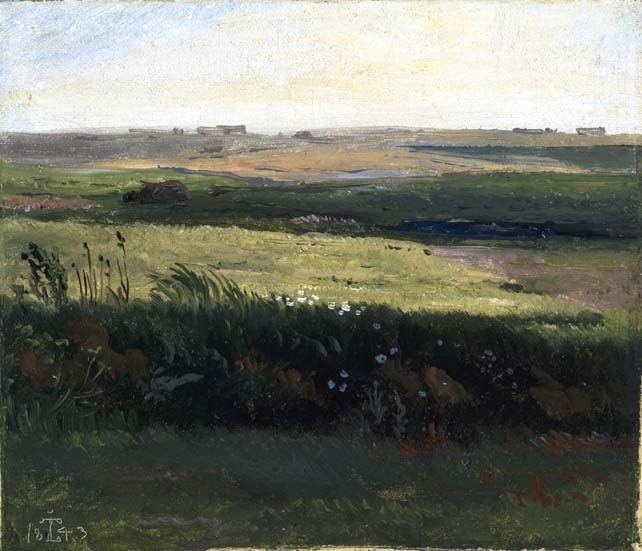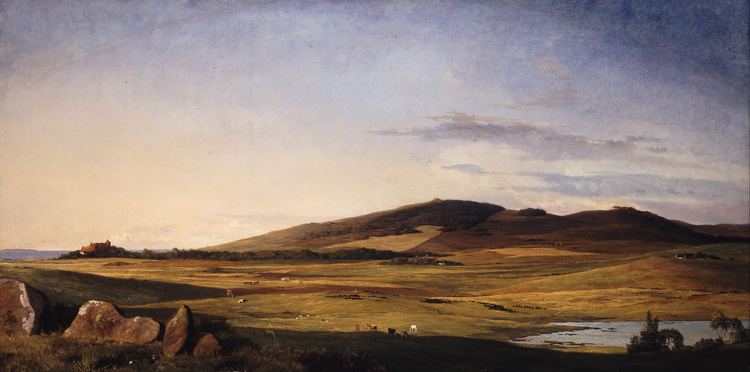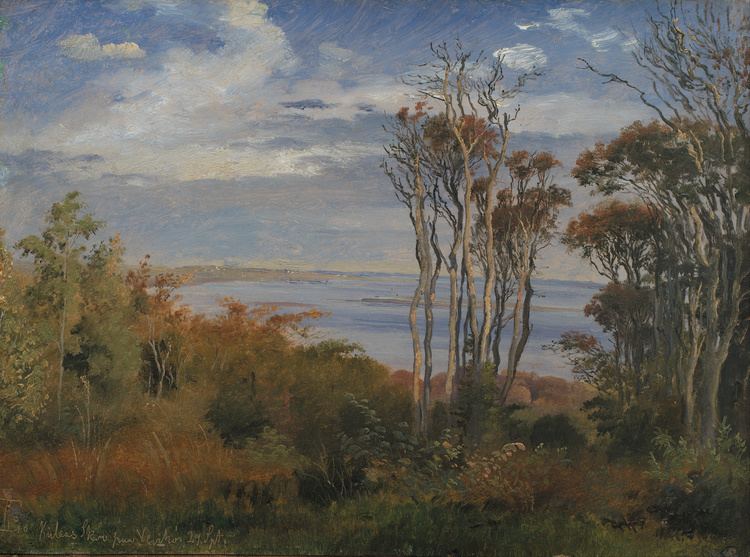Nationality Danish Died April 26, 1848 Role Artist | Name Johan Lundbye Known for Painting | |
 | ||
Artwork Two Cows in as Field near Vognserup Manor, Zealand | ||
Our conservator pauline banke tells about johan thomas lundbye s painting open region
Johan Thomas Lundbye (1 September 1818 - 25 April 1848) was a promising young Danish painter and graphic artist, known for his animal and landscape paintings who died at the age of 29. He was artistically inspired by Niels Laurits Høyen's call to develop a Danish nationalistic art by exploring as motif the characteristic landscapes, the historical buildings and monuments, and the simple, rural people of Denmark. He became one of his generation’s national romantic painters, along with P. C. Skovgaard and Lorenz Frølich, to regularly depict the landscape of Zealand.
Contents
- Our conservator pauline banke tells about johan thomas lundbye s painting open region
- Annette theresa leiding om bakketrolden sindre uden for sin hule 1845 af johan thomas lundbye
- Biography
- References

Annette theresa leiding om bakketrolden sindre uden for sin hule 1845 af johan thomas lundbye
Biography

He was born in Kalundborg to Joachim Theodor Lundbye and wife Catherine Bonnevie. He was sickly as a child. He studied privately under animal painter Christian Holm and at the age of 14 he came into J. L. Lund’s drawing school and the Royal Danish Academy of Art (Danish, Det Kongelige Danske Kunstakademi) in Copenhagen, where he finished in 1842. He began exhibiting in 1835, and in 1839 he made An Ancient Burial Mound by Raklev on Refsnæs and his painting "Parti af Dyrehaven med Hjorte og Hinde" ("View of the Deer Park with Stag and Hind") was purchased by N.L. Høyen's influential Art Union (Kunstforeningen).

In the years to come he would focus his painting on depicting landscapes. His large "Kystparti ved Isefjord" ("Coast View by Isefjord") was exhibited in 1843 and purchased by the Royal Painting Collection, now the Danish National Gallery (Statens Museum for Kunst). He illustrated Hans Vilhelm Kaalund's Fabler for børn, a book of poetry for young children published in 1845.

He received a travel grant from the Academy in 1845, which was renewed a year later. On June 5, 1845 he left Denmark and traveled through Germany (Altona, Düsseldorf, Cologne, Mainz, Strasbourg), over the Rhine to Switzerland (Basel, Geneva) to France (Marseilles), and then to Italy, where he painted "Oxer i den romerske Kampagne" ("Oxen in the Roman Campagne"), which was exhibited in 1847 and purchased by the Royal Painting Collection.

He returned to Denmark on 18 July 1846 after a year and half. He surprised his circle of friends and announced that he was going to live in the country for a year, and took a little farm near Helsingør. The First War of Schleswig, known in Denmark as the Three Years' War (Treårskrigen), however broke out, and in the spring of 1848 he enlisted in the army like many other young artists.
He died eight days later on 26 April 1848. There is some question as to whether he died from an accidental shot, or whether the chronically depressed artist took his own life.
